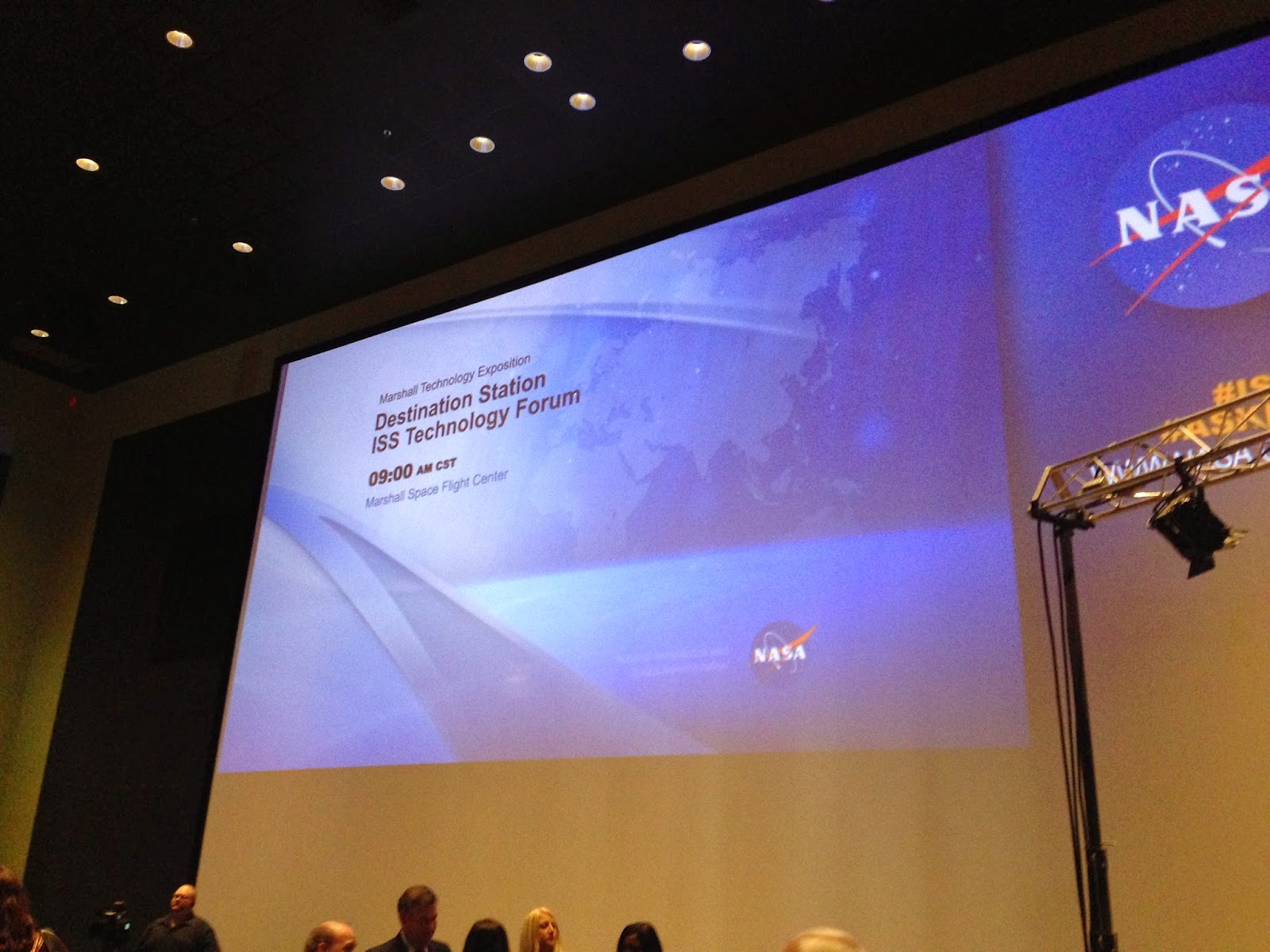 |
| 1st stop - the U.S. Space & Rocket Ctr. |
 |
| Look, ma - I'm on TV! Kind-of. |
Did you know that a great majority of the water on ISS is recycled? But not all of it. Some of the non-recyclable water is in a sludge that the current technology has a difficult, if not impossible, time reclaiming. Even if that sludge only represents 5% of the overall total, NASA's engineers are trying to come up with efficient methods to squeeze every last ounce of water out of it that they can. Tech like that will be critical to the success of any long-term mission since water is heavy and is a finite resource in deep-space (unless we're able to produce it in-situ).
 |
| Cutaway of a 3D-printed injector nozzle assembly. |
 |
| Virtual trainer |
We then traveled upstairs to the ISS Payload Operation Center - one of 4(?)...I think (I really should take better notes) in the world that cover 24/7 operation and monitoring. From what I recall, the Russians take care of their own stuff...but many of the other partner nations will make use of our services for this. And it's an important job - they have their own independent power supply in the event of general failure (as occurred a couple years ago when Huntsville experienced some significant storms).
That's all for now - but there's so much more to come in 'Part 2'.
No comments:
Post a Comment